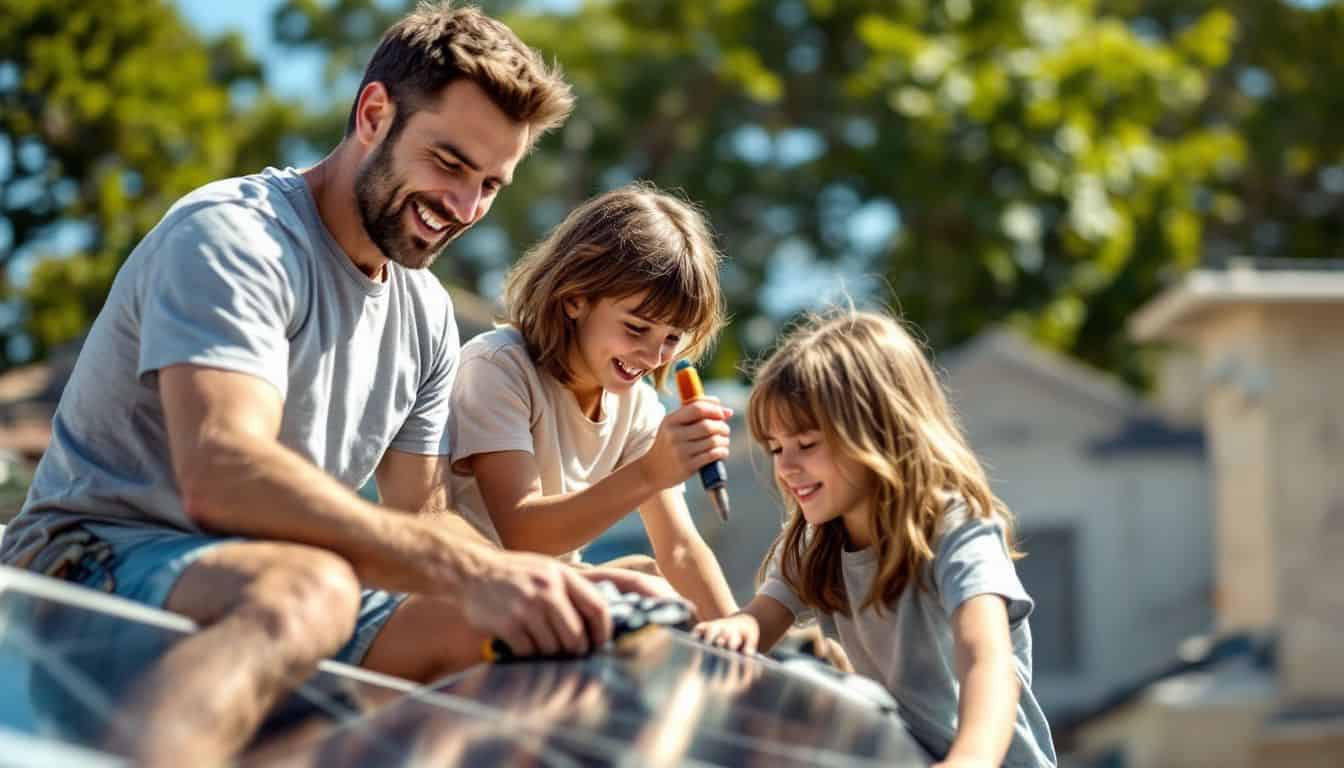Rising energy bills keep hitting your wallet harder each month. Solar power use in American homes has grown by 300% in the past decade, making it a smart choice for saving money. Learning how to use solar energy at home opens up eight practical ways to cut costs and power your daily life.
Ready to brighten your future with clean, free energy from the sun?
Key Takeaways
Solar panels can cut power bills by up to 90%, with a typical 7.15 kW home system costing $18,000-$20,000 before tax credits. The government offers a 30% tax credit until 2025.
Solar water heaters reduce energy bills by up to 80% in summer months. They come in two types: active systems with pumps and passive systems that work without moving parts.
Solar monitoring systems help track energy use through mobile apps. Users who watch their power patterns and run appliances during peak solar hours save 15-20% on energy bills.
Indoor solar lighting systems are growing fast, with the market expected to reach $850 million by 2023. New perovskite solar cells can convert 40.1% of indoor light to power.
Table of Contents
Solar Panels for Electricity
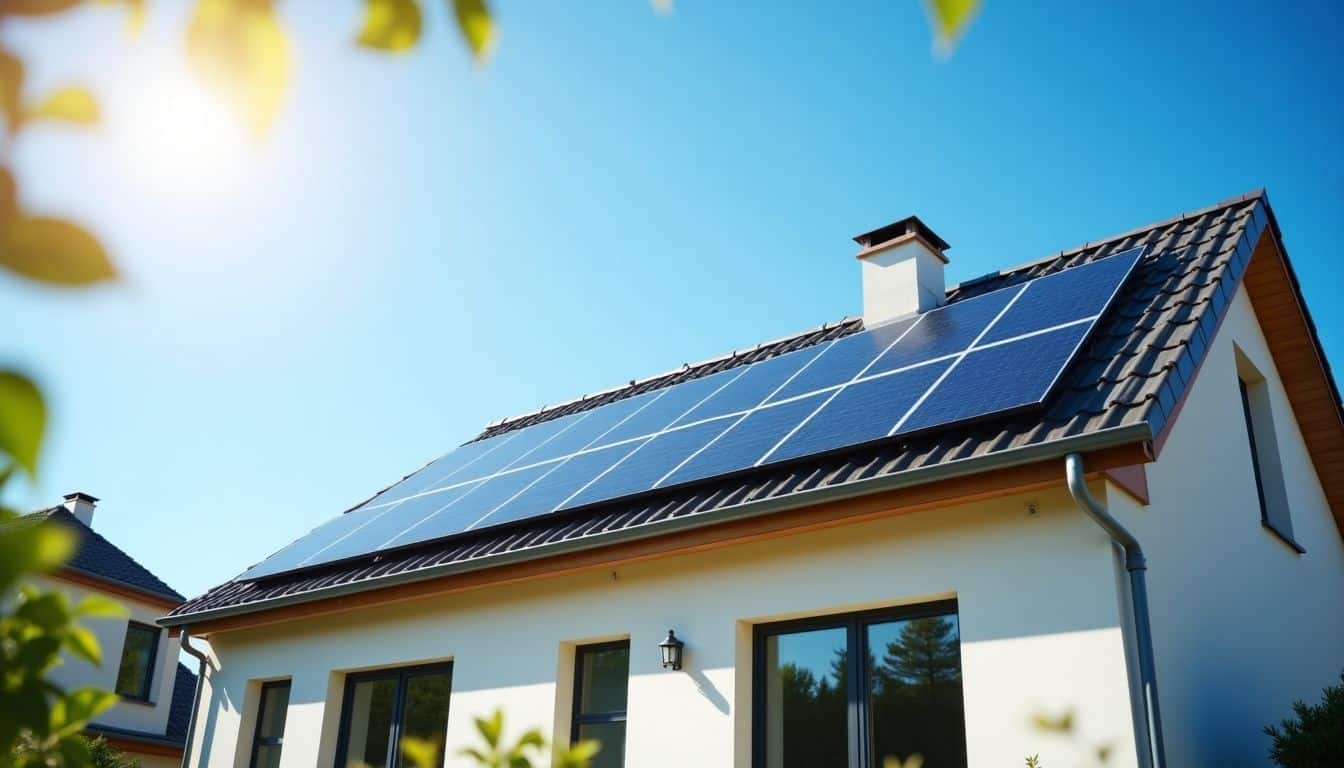
Solar panels turn your roof into a mini power plant, creating clean electricity from sunlight. These PV systems connect to your home’s wiring and can slash your monthly power bills by up to 90%.
Installing photovoltaic (PV) panels
Installing PV panels starts with picking the right system size for your home. Most houses need a 7.15 kW setup, which costs around $18,000 to $20,000 before any money-saving deals.
Adopting tailored energy plans from providers like energytexas.com for homes to large-scale industries can significantly contribute to this global transition. The best panels are monocrystalline types, reaching up to 22.5% power output.
Professional installers with NABCEP badges know how to put panels on your roof the right way. They charge about $3.03 per watt, making a full 7.2 kW system cost $21,816. The good news? The government gives back 30% of what you spend through tax credits until 2025.
Next up, you’ll want to think about connecting these panels to your home’s power grid.
Connecting to the grid or using off-grid systems

Grid-tied solar systems connect your home to the local power grid. This setup lets you earn credits through net metering for extra power you make. Your panels feed power to the grid during sunny days.
At night, you pull power back from the grid. The grid acts like a giant battery, storing your excess energy for later use.
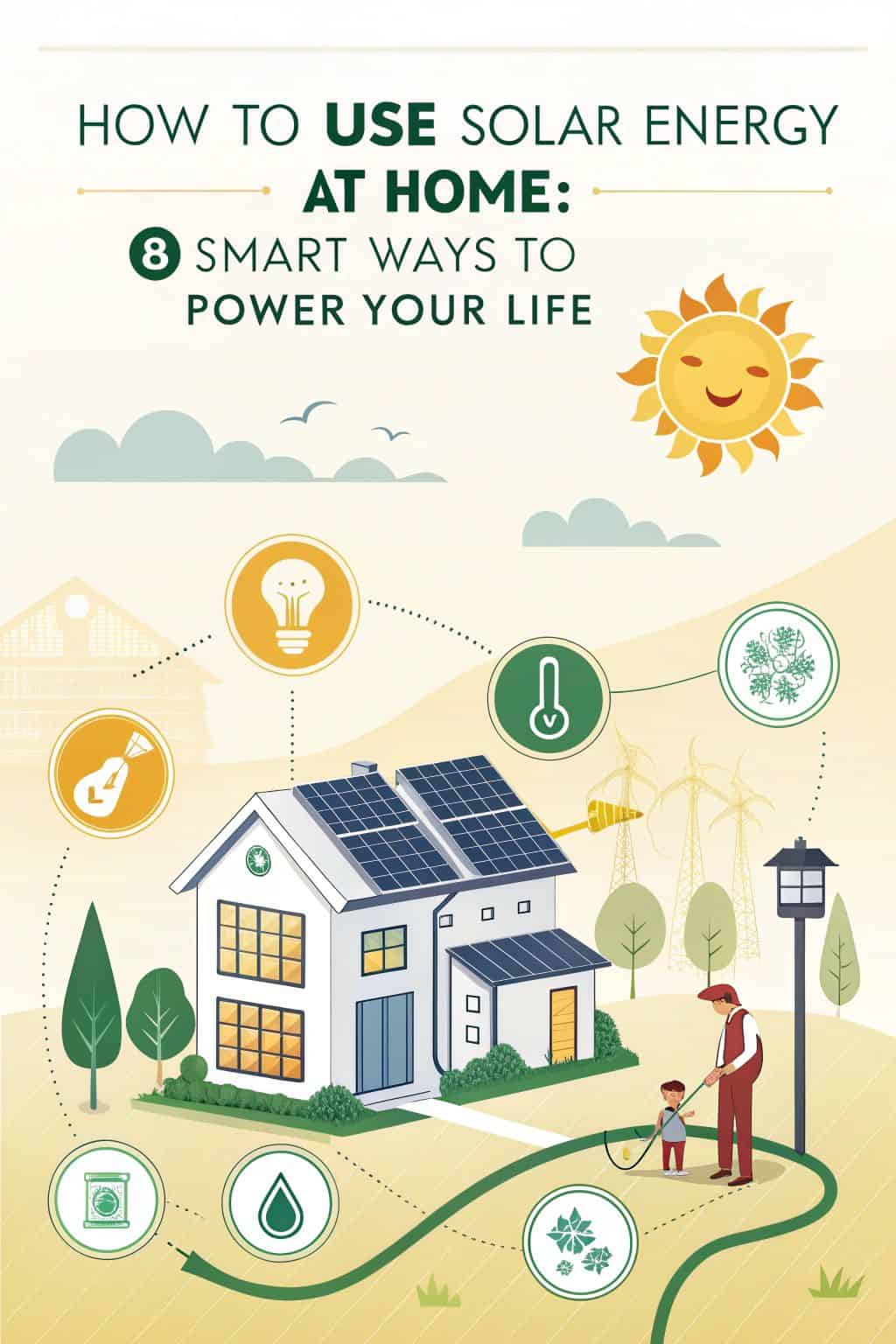
Off-grid systems provide independence from utility companies. These systems need solar batteries to store power for nights and cloudy days. About 18% of your costs will go to permits and paperwork.
You’ll need more panels and batteries than a grid-tied system to meet all your power needs. Off-grid living works great in remote areas where power lines don’t reach.
Solar freedom means choosing between staying connected or going solo with your power supply.
Solar water heaters can reduce your monthly bills and lower your carbon footprint.
Solar Water Heating
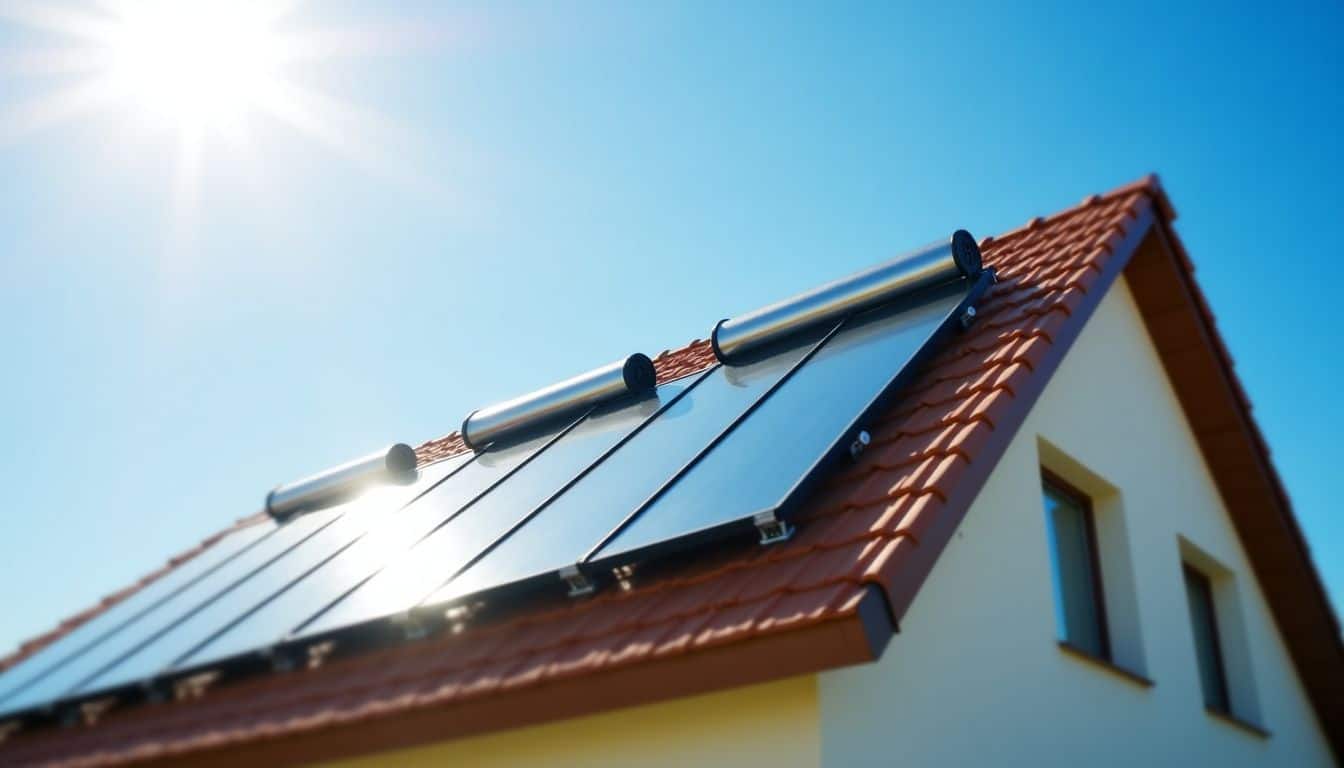
Solar water heating can slash your energy bills by up to 80% during summer months. These systems work by capturing the sun’s warmth through roof-mounted collectors, which then heat your water for showers, dishes, and laundry.
Solar water heaters for daily household use
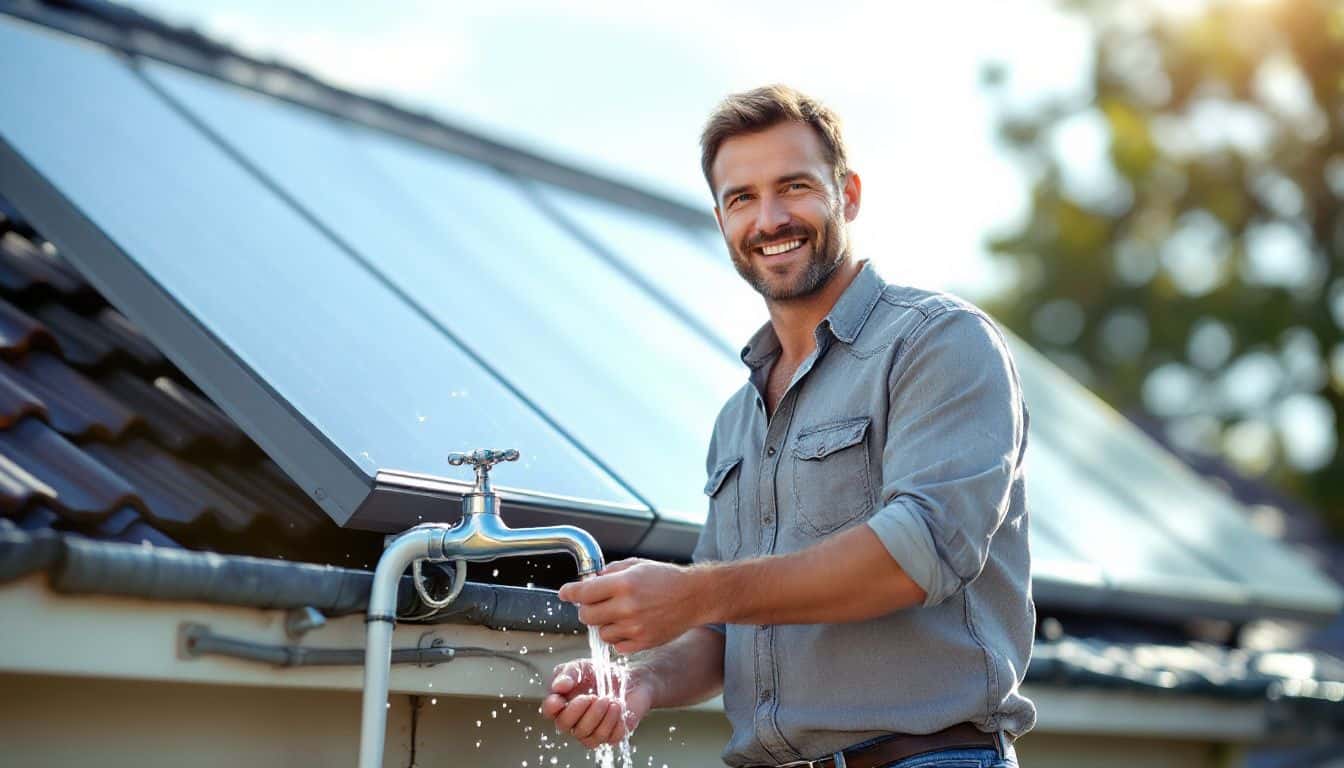
Hot water flows freely in my home thanks to my trusty solar water heater. These systems pack two main parts: storage tanks and solar collectors that turn sunlight into heat for water.
I picked an active system with pumps that move water around, though it costs more than passive ones. The extra cost pays off because active systems work better at heating water for my daily showers, dishes, and laundry.
My neighbors went with a passive solar water heater for their house. They love how it needs almost no upkeep and rarely breaks down. Their system may heat water a bit slower than mine, but it gets the job done for basic needs.
Both types help cut energy bills while giving homes a steady supply of hot water. I’ve noticed my utility costs dropped since installing my system last summer.
Choosing between active and passive systems
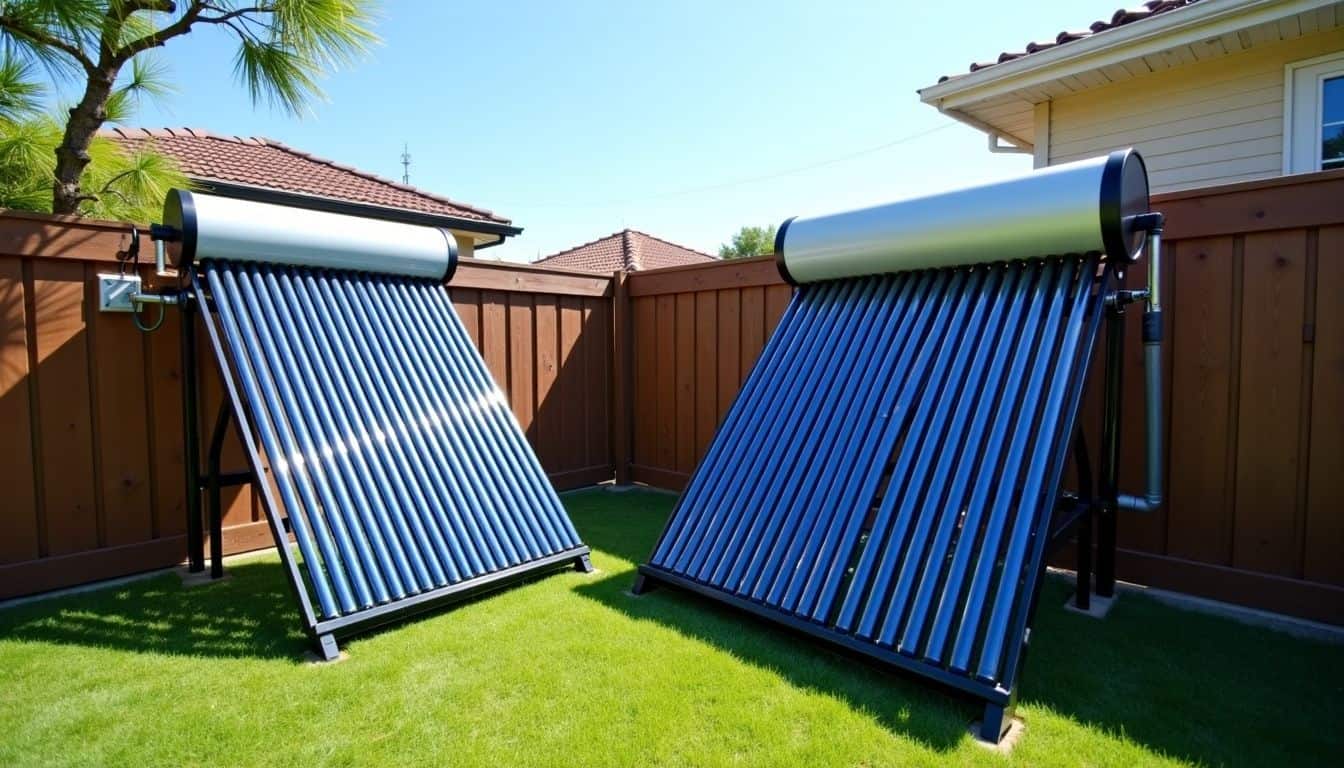
Solar water heaters bring great value to your home. Now you’ll need to pick between active and passive systems for the best results.
The simplest solution often proves the most reliable in the long run.
Active systems use mechanical pumps to move water through your home. These systems work faster and give you more hot water, but they cost more to install and fix. Passive systems heat water directly without any moving parts.
They’re cheaper and last longer, though they don’t heat water as quickly. I installed a passive system in my beach house five years ago, and it still works great with almost no maintenance.
Your choice depends on your budget and how much hot water you need daily. Active systems make sense for larger families who use lots of hot water. Passive systems fit better for smaller households or vacation homes where reliability matters more than speed.
Solar Lighting
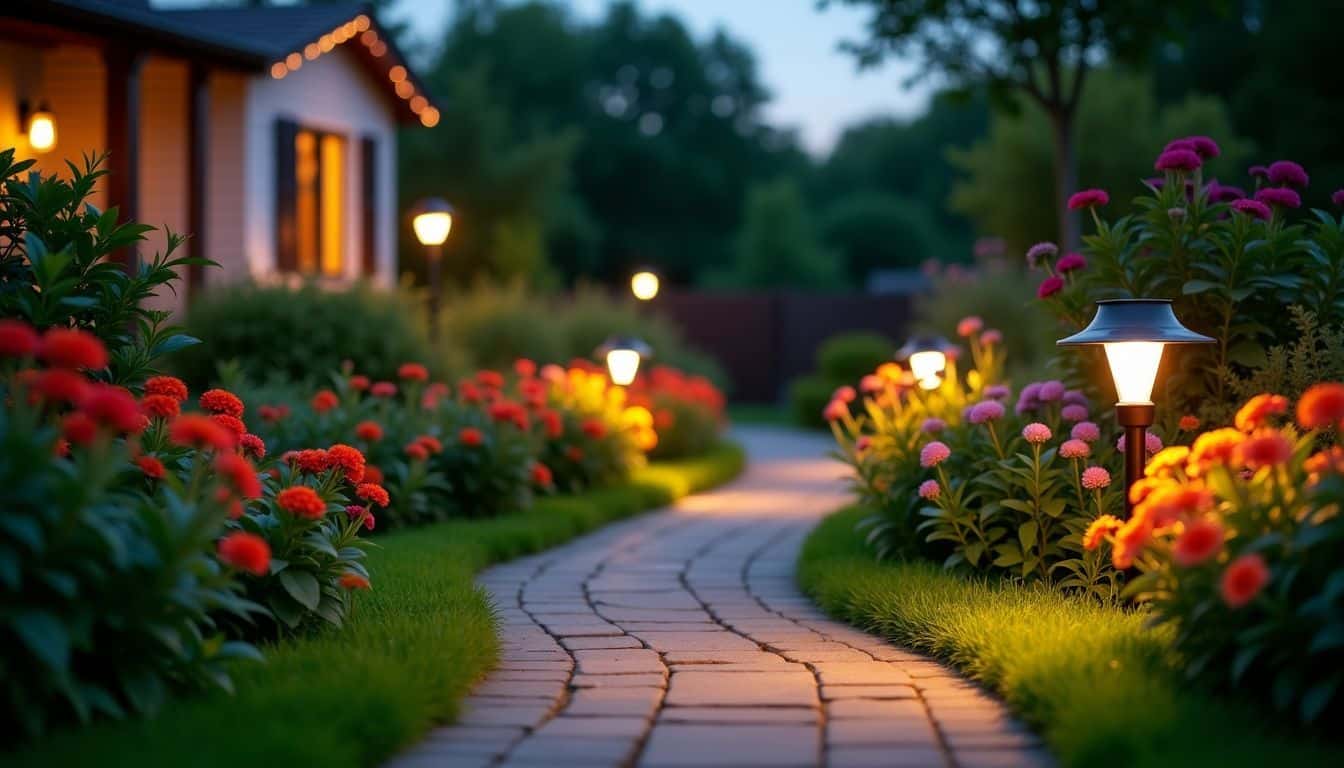
Solar lights bring magic to your outdoor spaces without adding a penny to your power bill. These smart lights store energy during the day and light up your garden paths, driveways, and patios at night, making your home safer and more beautiful.
Outdoor solar-powered lights
Outdoor lights powered by the sun offer a bright and easy way to light up your yard. These lights turn sunlight into power during the day and store it in batteries for nighttime use.
You’ll find them perfect for lighting paths, mounting on walls, or setting up as lamp posts. The best part? They need almost no upkeep to keep shining.
Your outdoor lighting will change with the seasons. During winter months, expect these lights to run 30% to 50% less time than in summer due to shorter days. Trees and buildings can block sunlight and affect how well they work.
Before buying any system, check if you can get new bulbs or batteries later. This small step saves money and hassle down the road.
Indoor solar lighting systems
Just like outdoor solar lights brighten your garden paths, indoor solar lighting brings the sun’s power right into your home. Solar tubes and light pipes now make it easy to light up dark spaces without using grid power.
These systems work great with amorphous silicon cells that can produce power even in low light conditions of 20 lux or less.
The future of indoor lighting is as bright as the sun itself – and just as renewable.
Modern indoor solar lighting pairs well with smart IoT devices, creating an energy-efficient home setup. The market for these indoor systems will grow to $850 million by 2023, showing how popular they’ve become.
Solar light tubes catch sunlight from your roof and send it through reflective pipes to light up rooms below. They work best in spaces like hallways, bathrooms, and closets where natural light rarely reaches.
The latest perovskite solar cells can turn 40.1% of indoor light into usable power, making them super efficient for home lighting needs.
Solar Heating and Cooling

Solar heating and cooling systems turn your home into a year-round comfort zone without the high energy bills. These smart systems tap into the sun’s power to warm your home in winter and keep it cool in summer, making your home more earth-friendly.
Solar space heating solutions
Space heating with the sun’s power brings comfort to your home through smart systems. A radiant floor setup moves warm water through pipes under your feet, creating cozy spaces throughout the house.
Many homeowners pair these systems with hot water or hot air distribution methods for better results. I installed one last winter, and the warmth feels more natural than traditional heating.
The beauty of heating systems lies in their flexibility. You can pick between active systems that use mechanical pumps or passive ones that work through natural flow. Both options work great in homes and office buildings.
My neighbor chose an active system with pumps, while I went for a passive setup. The passive choice needs less maintenance, though it may heat a bit slower. These setups help cut energy bills while keeping indoor temperatures just right.
Solar cooling systems for temperature regulation
Solar cooling systems offer a smart way to beat the summer heat without huge power bills. These systems tap into the sun’s energy through special panels that cool your home naturally.
My neighbor Sarah cut her cooling costs by 40% last summer with a solar absorption chiller system. These systems work like regular air conditioners but use solar thermal energy instead of electricity to create cool air.
Solar thermal SCACSs provide reliable and effective cooling while reducing CO2 emissions from traditional systems.
The best part about solar cooling is its earth-friendly nature. Traditional cooling systems pump out lots of CO2, but solar options keep things clean and green. The system pulls in hot air, runs it through solar-powered cooling units, and sends chilled air back into your rooms.
I’ve seen these systems work great in both small homes and big buildings. The initial setup costs might seem high, but the energy savings make up for it fast.
Solar Cooking

Solar cooking uses the sun’s power to prepare tasty meals without any fuel costs or electricity bills. A solar cooker functions like a mini greenhouse, capturing heat from sunlight to cook food at temperatures up to 300 degrees Fahrenheit.
Using solar ovens and cookers
A solar oven brings the power of sunshine right to your kitchen. These eco-friendly cookers work like slow cookers, taking more time but saving lots of energy in the process. You can build two types: a light cardboard version for quick meals or a sturdy metal drum model for serious cooking.
The best part? They slash your need for firewood and coal while cooking tasty treats like baked beans and simple cakes.
Food safety matters most with these sun-powered kitchen helpers. A meat thermometer helps track cooking progress, making sure meat hits 170°F for safe eating. Think of it as your personal food safety guard while the sun does all the heavy lifting.
The cooking might take longer, but the energy savings make it worth the wait. Plus, who doesn’t love making s’mores without starting a campfire?
Charging Electric Vehicles (EVs)
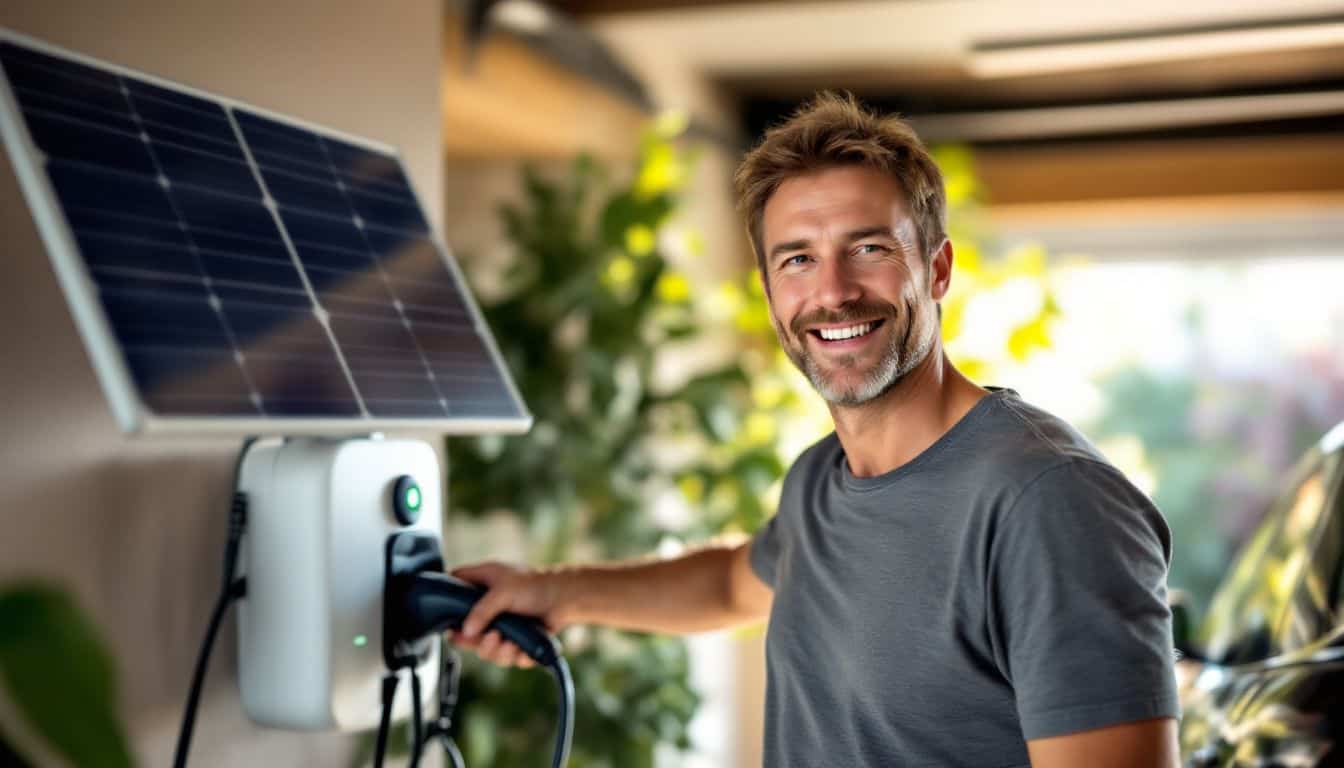
Install a solar-powered EV charging station in your garage to charge your electric car with clean energy, and you’ll love watching your energy bills drop while helping Mother Earth smile – ready to discover more ways solar power can change your life?
Solar-powered EV charging stations at home
Solar power makes charging your electric vehicle at home simple. Your home solar panels can cut EV charging costs by 51% compared to regular grid power. Most EVs, like the Nissan LEAF, need just 5 to 12 solar panels for a full charge.
The clean energy from solar panels flows straight to your car, making it the most efficient way to power up.
A basic home EV charging setup costs between $1,000 to $2,000. This price covers either a Level 1 or Level 2 charger installation. Many homeowners link their EV charger right to their solar power system.
This direct connection makes sure your car runs on pure solar energy. Smart energy management systems help track your power use and save more money. Solar batteries can store extra power for backup needs.
Energy Storage Solutions
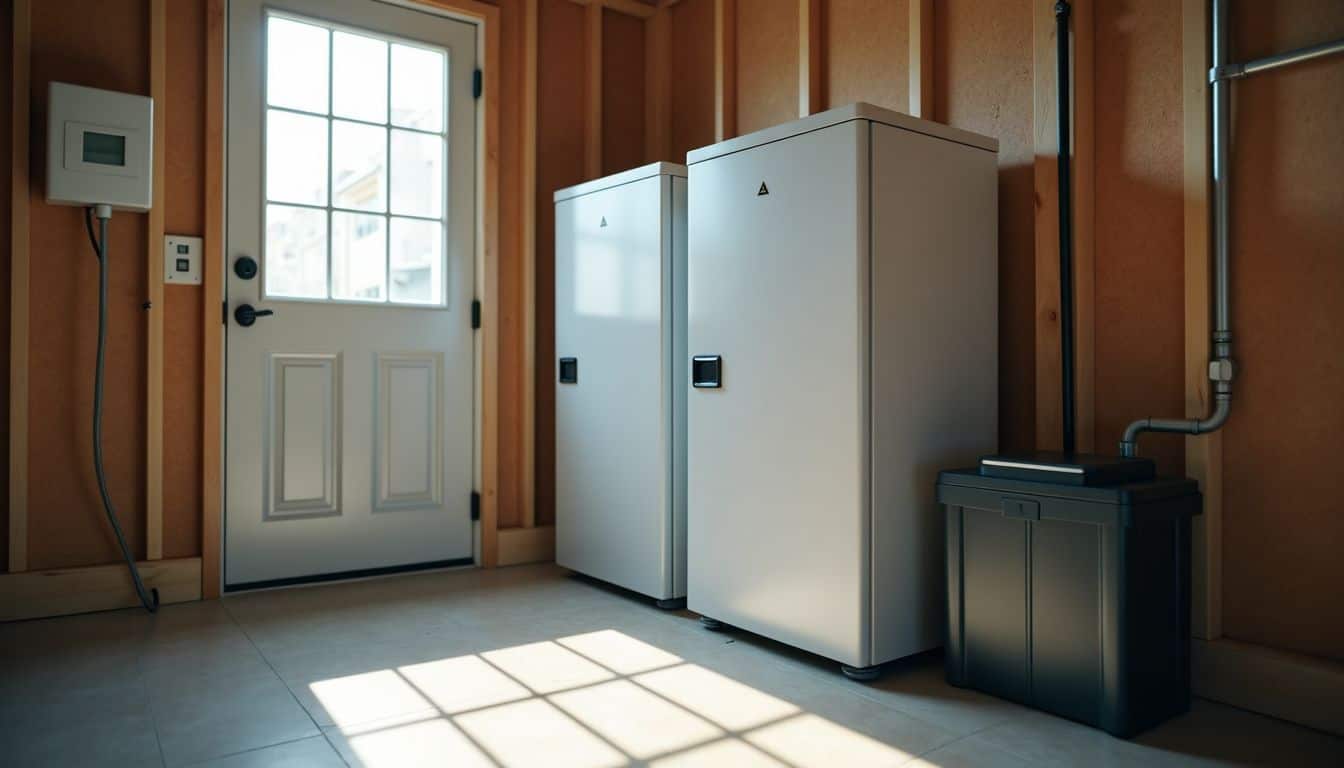
Solar batteries store extra power from your panels for nighttime or cloudy days. These storage systems give you total control over your home’s power supply, keeping your lights on even during blackouts.
Installing solar batteries for backup power
A backup power system with solar batteries gives you freedom from the grid. These systems store extra power made during sunny days for later use. You’ll need a site check first to pick the right battery size for your needs.
The process includes getting permits and making sure your home’s wiring can handle the setup. Many homeowners love this option because it keeps the lights on during blackouts.
Battery storage has become more budget-friendly thanks to government help. Your local utility company might offer special deals too. The setup connects smoothly to your existing solar panels through a charge controller.
This smart device manages power flow between your panels, batteries, and home. You’ll get the most value by matching your battery system to your daily power habits.
Smart Solar Energy Management

Smart solar monitoring systems track your power use in real time through a mobile app. You can spot power-hungry appliances and adjust your habits to save more money on your electric bills.
Using monitoring systems for efficient energy use
Solar monitoring systems put you in control of your home’s energy use. These systems track how much power you make and use throughout the day. You’ll see clear data about your solar panels’ output right on your phone or computer.
The real-time info helps you spot energy waste and fix problems fast.
Your monitoring setup works like a fitness tracker for your solar system. It shows exactly when your panels make the most electricity and how much power different appliances use. Many homeowners save 15-20% on energy bills by watching these patterns and running power-hungry devices during peak solar hours.
The system alerts you if anything goes wrong, so you can keep your solar investment running at its best.
People Also Ask
How much does a home solar energy system cost?
The cost per watt varies by location and system size. Most rooftop solar setups run between $15,000 to $25,000. But don’t worry – federal tax credits, solar loans, and local solar incentives can cut this price way down.
What’s the deal with net metering and the utility grid?
Net metering lets you send extra solar electricity back to the power grid. Your electric utility gives you credits for this power generated. It’s like having a piggy bank for your extra solar energy!
Do solar panels work during bad weather?
Solar photovoltaics still make electricity on cloudy days, just less of it. Your grid-connected solar systems keep working year-round. The solar inverter helps manage power flow even when the weather isn’t perfect.
What’s a PPA, and should I get one?
A power purchase agreement (PPA) means you let a company put solar arrays on your home. They own the panels, and you buy cheaper electricity from them. It’s good if you want solar without big upfront costs.
How do I maintain my solar panels?
Solar panel maintenance is pretty simple. Clean them twice yearly and check for leaves or dirt. Most solar installers include basic upkeep in their service plans. Think of it like giving your car a wash!
Can I join community solar if I can’t get rooftop panels?
Yes! Community solar lets you buy clean energy from shared solar power plants. It’s perfect if your homeowners’ association says no to panels, or if your rooftop isn’t sunny enough. You still get renewable energy benefits without installation hassles.
References
https://learn.gexaenergy.com/article/ways-solar-energy-is-used-in-your-everyday-life
https://www.sciencedirect.com/science/article/pii/S2214157X2301002X
https://pmc.ncbi.nlm.nih.gov/articles/PMC6946270/
https://www.energy.gov/energysaver/solar-water-heaters
https://learn.gexaenergy.com/article/the-ultimate-guide-to-solar-powered-water-heaters (2024-10-16)
https://www.energy.gov/energysaver/outdoor-solar-lighting
https://www.sciencedirect.com/science/article/abs/pii/S0038092X23006916
https://freedomsolarpower.com/blog/51-uses-of-solar-energy (2023-01-19)
https://www.sciencedirect.com/science/article/pii/S2352484722001731
https://www.wikihow.com/Make-and-Use-a-Solar-Oven
https://www.solar.com/learn/solar-panels-charge-electric-car/
https://www.cnet.com/home/energy-and-utilities/heres-how-many-solar-panels-youll-need-to-charge-your-ev/ (2024-08-28)
https://sistinesolar.com/solar-battery-storage-installation/
